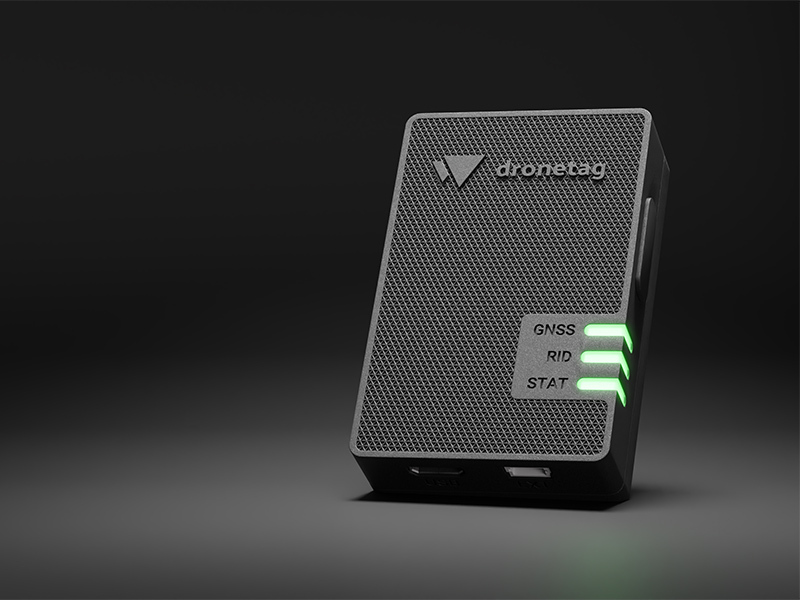Everything you should know about Remote ID

Why are we even writing about Remote ID?
The simplest answer is: because we are prompted to do so by changes in EU law. The technology itself is not fundamentally groundbreaking, and we probably would never have mentioned it, if not for the regulations that impose its use. To be precise: they will impose from January 1, 2024, although they were originally supposed to take effect a year earlier. EASA's explanation for the delay is a tenuous selection of devices that conform to some (for there are already several) Remote ID standard. The Americans are thus slightly ahead - setting the start date for Remote ID in the U.S. for September 16, 2023. Other countries have also taken seriously the need to normalize and organize the movement of drones - in Japan, for example, similar (though more restrictive) regulations have already been in place since the middle of last year. The Swiss were even faster - they launched the world's first network supporting Remote ID (Network RID) as early as September 2021!
Let's identify Remote ID
What exactly is Remote ID? Generally speaking - it is such functionality of a drone that allows it to remotely provide its identification data and (depending on the Remote ID standard) various other data, such as location, altitude, directional speed of the aircraft. The idea was taken from civil aviation, which was implemented at different speeds - in the form of ADS-B - in the 2000s in different countries. In Poland, as of mid-2016, all sold and newly registered manned aircraft had to be equipped with an ADS-B transponder, and as of 2020, this obligation already applies to all registered manned aircraft.
How it works.
Remote ID in Europe in its target form will consist of two subsystems - Direct (or Broadcast) Remote ID (DRI) and Network Remote ID (NRI). Why did I add the word "target"? Well, because we are now in a period of ... yes, yes - transition. Probably behind this is the (permanent) delay of European legislators in the mission to clean up the airspace - in any case, standards for U-Space have not yet been published to this day, and it so happens that Network Remote ID will be one of the core functionalities of U-Space. So, although the new drones or external Remote ID modules available today - such as the Dronetag Mini - support both Remote ID sub-standards, for now we may not bother with Network Remote ID.

The task of each Remote ID subsystem is to share information about an unmanned aircraft moving through space. Despite their apparent similarity - they do this in different ways. DRI, by design, is a short-range system. Like ADS-B modules - the DRI module simply broadcasts periodic messages via radio, which include information about:
- UAV operator number,
- UAV serial number,
- the aircraft's geographic position, its operator's position and/or takeoff point,
- the speed and course of the aircraft, and,
- about its possible status (e.g., information about the loss of connection with the pilot or some failsafe mode).
By design, the information is to be available within a radius of at least 250 meters from the UAV (Bluetooth 4 standard), but depending on the communication technology used, this can extend up to 3 kilometers (in the case of WiFi NAN or WiFi Beacon). This will make the aircraft "visible" to nearby airspace users (other UAVs and manned aircraft) and representatives of relevant services. Identification of the aircraft will be limited, for example, to pointing a smartphone lens at it - and augmented reality will add the relevant data.
On the other hand, we know little more about NRI than that in this case similar data will be transmitted to the cloud, from where it can be retrieved by other systems or users. This will make it possible to manage the airspace in which UAVs move, which is the goal of building and deploying U-Space. We can expect more detailed information soon.
What does it matter to me?
If you are the lucky owner of a drone in the C0 class, or unclassed, under 250 grams - you don't care at all and can stop reading at this point with a sense of wasted time. Similarly, if you intend to use only C4-class drones. However, if you own/plan to own a drone of the other classes - you need to think about ensuring compliance with the requirement to transmit Remote ID. There are already drones on the market that include the appropriate module - make sure when you buy one - or modules that can be used with older drones with the given class. As of January 1 (unless the deadline is postponed again), all UAVs (excluding C0 and C4) used in open or special (certified) categories must transmit Direct Remote ID.
What about ADS-B?
ADS-B is a system used primarily in civil aviation. However, nature does not like a vacuum - so in the absence of other solutions, some manufacturers have begun to put ADS-B modules in drones. Of course, such modules transmit with much lower power than "aircraft" ADS-B and their range is a few hundred meters to a few kilometers, while their "big brothers" transmit for hundreds of kilometers. Unfortunately, ADS-B in drones has not been properly reflected in legal standards - and the EASA or FAA have set their sights on other solutions. Today, therefore, some countries have already banned the use of ADS-B in unmanned aircraft to avoid confusion. Today, the writing on the box: ADS-B compliant unfortunately does not take care of the issue of Remote ID compliance - and is no longer an argument when buying a new drone.




